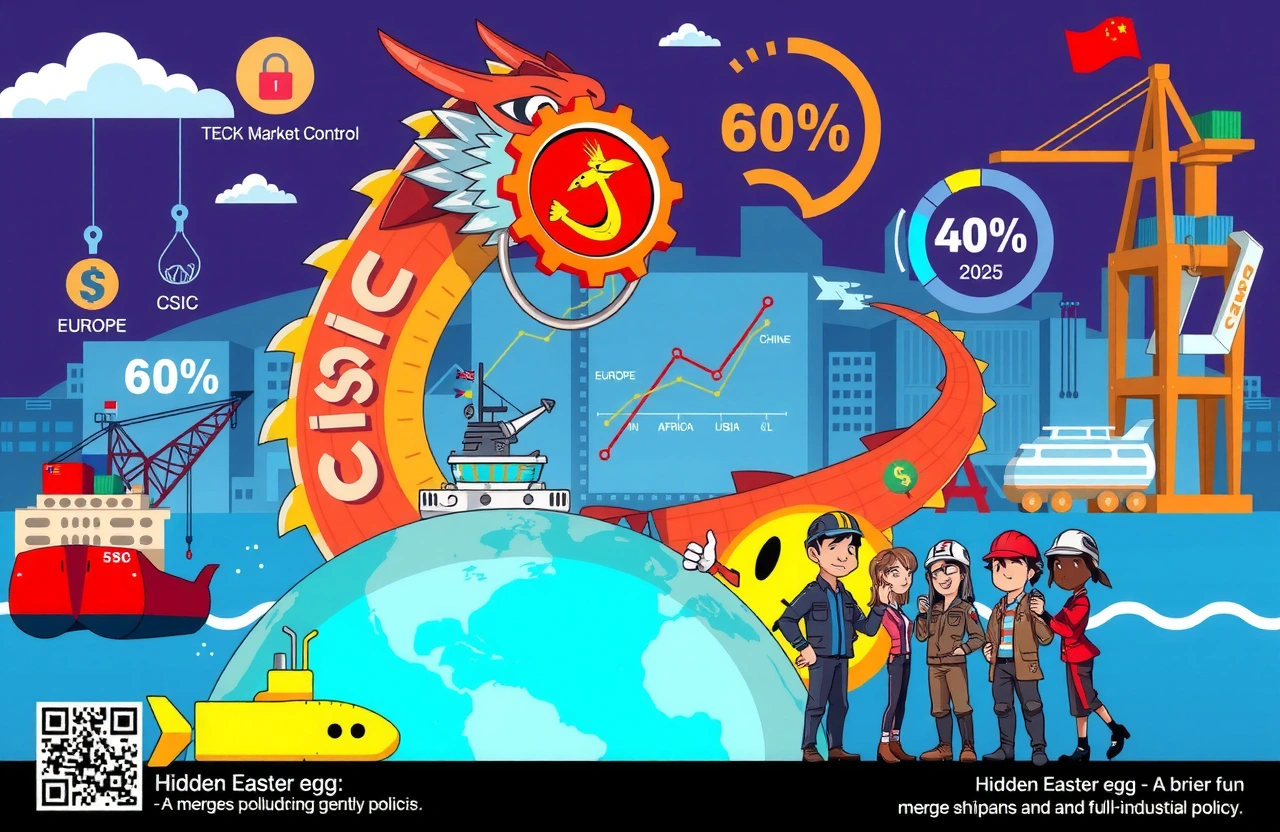Historic Consolidation Reshapes Global Shipbuilding
In a landmark development for China’s capital markets, the Shanghai Stock Exchange has granted merger approval for the restructuring of two state-owned shipbuilding titans. On July 4, 2025, China State Shipbuilding Corporation (CSSC, 中国船舶) announced it received regulatory clearance to absorb China Shipbuilding Industry Corporation (CSIC, 中国重工) through a stock swap arrangement. This merger approval marks the culmination of nine months of preparations following China’s broader push for industrial consolidation. With both companies boasting market valuations exceeding ¥100 billion each, the transaction will create the world’s largest listed shipbuilder – a powerhouse controlling approximately 60% of China’s naval shipbuilding capacity.
The strategic consolidation delivers on multiple objectives:
- Eliminating operational redundancies between the previously competing SOE subsidiaries
- Consolidating China’s leadership in global ship orders amid rising maritime trade volumes
- Accelerating military modernization through streamlined defense contracts
- Aligning with Beijing’s Made in China 2025 industrial upgrade framework
Regulatory Pathway and Merger Mechanics
The Approval Process Explained
The SSE’s Acquisition and Restructuring Committee formally ratified the transaction during its eighth review meeting of 2025. Key regulatory steps included:
- Endorsement from China’s State-owned Assets Supervision and Administration Commission (SASAC)
- Mandatory disclosure documentation filings since September 2024
- Compliance verification under the listed company major asset reorganization regulations
- Confirmation of no changes in ultimate ownership structure (retaining SASAC oversight)
Final implementation awaits registration approval from the China Securities Regulatory Commission, expected within four weeks based on standard procedures. This merger approval underscores Shanghai’s position as Asia’s premier venue for heavy-industry restructuring.
Exchange Terms and Shareholder Impact
The complex stock-swap arrangement sees CSIC shareholders receive:
- 0.1339 CSSC shares for each CSIC share held
- Based on CSSC per-share value of ¥37.84 (120-day averaged price)
After adjustment for dividends, this represents a 19% premium to CSIC’s historical trading price. Credit Suisse analysts note: “The exchange ratio balances strategic consolidation objectives with minority shareholder protection – crucial given CSIC’s retail investor base.” Upon completion, CSSC shares will comprise approximately 75% of the combined entity.
Industry Transformation Fundamentals
Synergy Realization Strategy
Integration roadmaps highlight ¥3.8 billion in projected collaboration savings through:
- Consolidating eight overlapping R&D centers
- Pooling procurement programs across 38 shipyards
- Unifying standards at complementary facilities like CSSC’s LNG technology hubs and CSIC’s submarine construction yards
The merger approval specifically mandates elimination of internal competition.
Market Dominance Metrics
The merged entity becomes the undisputed global leader:
- Total order backlog: 62.63 million deadweight tons
- Combined revenue capacity: ¥130+ billion annually
- Market domination: Order volume exceeds Samsung Heavy Industries by 4.8x and Hyundai Heavy Industries by 3.2x
Source: Clarkson Research Services 2024 Orderbook Analysis
Financial Performance Trajectory
Historic Results Analysis
Recent filings reveal robust operational momentum:
- CSSC Q1 2025: 180.99% YoY net profit growth to ¥1.127 billion
- CSIC turnaround: Returned to profitability (¥1.311 billion) in 2024 after 2023 losses
The divergence reflects CSSC’s earlier pivot toward specialized vessels – a strategy now benefiting both entities post-merger.
Forward-Looking Projections
Securities firms anticipate CAGR exceeding 18%:
- Changjiang Securities highlights “synergistic benefits accelerating order fulfillment”
- CMSC estimates a 22.7% operating margin expansion by 2027
- Haitong forecasts backlog monetization as premium-priced contracts enter production
Strategic Context and National Imperatives
Geopolitical Maritime Positioning
This merger approval advances three national priorities:
- Military modernization via unified naval ship production systems
- Export leadership in high-value segments like dual-fuel container ships
- Implementation of China Classification Society climate standards
The timing capitalizes on record ship replacement demand emerging from IMO 2025 emissions regulations.
Policy Alignment Framework
Rebuilding reflects deliberate state coordination:
- 2024 State Council “Ship Industry Digitalization Guidelines”
- Provincial infrastructure commitments at core yards in Jiangsu and Guangdong
- Dual-listed capacity (A+H shares) facilitating currency flexibility
Bernstein analysts observe: “Vertical SOE consolidation creates national champions capable of competing with Korean conglomerates across pricing tiers.”
Implementation Timelines Post-Merger Approval
The operational integration sequence includes:
- Phase 1 (90 days): Management consolidation and accounting alignment
- Phase 2 (Q4 2025): Yard specialization assignments finalized
- Phase 3 (2026): Unified brand rollout for export contracting
Regulatory milestones ahead encompass:
- CSRC registration formalities
- Antitrust filings in six jurisdictions
- Shareholder meetings for board appointments
Broader Market Implications and Outlook
As trading commences under the unified CSSC symbol (600150) in September, stakeholders should monitor:
- Component supplier chains: Opportunities for firms specializing in automation and emissions tech
- Employment transitions: Retention packages across Shanghai and Dalian operations
- Competitive response: Potential Hyundai Oilbank-Daewoo cooperation deals
This merger approval represents the most significant SOE restructuring since CRRC’s formation. With China commanding 52% of global vessel deliveries last quarter, the integrated entity delivers Beijing’s vision for sovereign industrial capacity scaling.
The model established here will likely inform restructuring protocols across state sectors. Consider reviewing Treasury disclosures quarterly to gauge integration progress.



